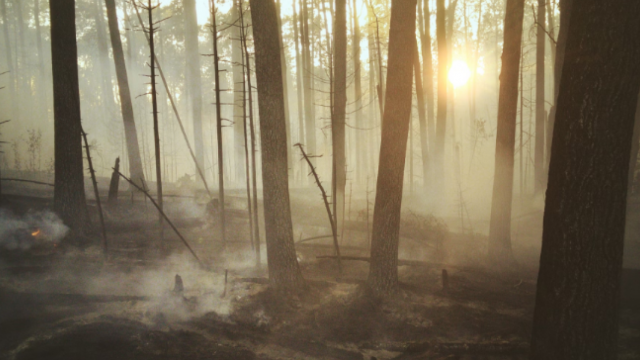
Hazards
A hazard is an event or condition that may cause injury, illness, or death to people or damage to assets. Both climate and non-climate-related stressors can exacerbate hazards.
Drought
A drought is a deficiency of precipitation over an extended period of time resulting in a water shortage. Drought conditions range from dry weather patterns and low water supply to impacts on crops, ecosystems, and disruptions in supply and demand for various commodities.
Air Quality
Air quality reflects the abundance of pollution present in air. Pollution is a mix of hazardous substances from both human-made and natural sources. Primary sources of human-made air pollution include vehicle emissions, fuel oils and natural gas to heat homes, by-products of manufacturing and power generation—particularly coal-fueled power plants—and fumes from chemical production.
Changing Seasons
As temperatures have risen across seasons, observations confirm shifts in timing, duration, and variability of seasonal events or processes that are correlated with seasons.
Erosion and Shoreline Recession
Coastal erosion is the process by which local sea level rise, strong wave action, and coastal flooding wear down or carry away rocks, soils, and/or sands along the coast.
Extreme Cold
A cold wave is a rapid fall in temperature within 24 hours and extreme low temperatures for an extended period. The temperatures classified as a cold wave are dependent on the location and defined by the local National Weather Service (NWS) weather forecast office. Extreme cold is sometimes accompanied by winter storm events in which the main types of precipitation are snow, sleet, or freezing rain.
Extreme Heat
A heat wave is a period of abnormally and uncomfortably hot and unusually humid weather, typically lasting two or more days with temperatures above the historical averages for a given area.
Flooding – Coastal
Coastal Flooding is when water inundates or covers normally dry coastal land as a result of high or rising tides or storm surges.
Flooding – General
Riverine flooding occurs when streams or rivers exceed the capacity of their natural or constructed channels to accommodate the flow of water. Flooding occurs when water overflows river banks, spilling out into adjacent low-lying, usually dry land.
Flooding – Rainfall-induced
Flash floods refer to high flowing water or inundation that begins within 6 hours of heavy rainfall. Flash floods generally occur along existing water channels or around existing water sources, including along coastlines.
High Winds
Strong Wind consists of damaging winds, often originating from thunderstorms, that are classified as exceeding 58 mph. High winds are also associated with hurricanes, tropical storms, and tornadoes. High winds have the potential to cause structural damage and electricity blackouts through downed power lines.
Landslides
Relatively rapid downhill movement of a mass of soil, rock, and other debris.
Multiple or All Hazards
Compound events result when multiple climate hazards occur close together in space and time: these often result in greater impacts than isolated hazards. Compound events can also result from the intersection of climate hazards with other environmental hazards such as pollution, non-climate hazards such as wars and pandemics, or socioeconomic stressors such as poverty and lack of adequate housing.
Severe Winter Weather
Winter Weather consists of winter storm events in which the main types of precipitation are snow, sleet, or freezing rain.
Shifting Species, Habitats, and Ecosystems
Changes in temperature and precipitation affect where species can live, how they interact, and the timing of biological events. Ecosystem changes can be driven by physical factors such as thermal stress, biological responses such as changing ranges, or both, often interacting with stressors from human activities. Multiple stressors can have complex interactive or amplifying effects on ecosystems.
Vector-Borne Disease
Diseases transmitted to humans and other animals by blood-feeding species such as mosquitoes, ticks, and fleas are vector-borne diseases. Examples include Dengue fever, West Nile Virus, Lyme disease, and malaria.
Water Quality
Surface waters and aquifers can be contaminated by various chemicals, microbes, and radionuclides. Common sources of drinking water contaminants include industry and agriculture, human and animal waste, treatment and distribution, and natural sources.
Wildfire
Wildfires are unplanned fires burning in natural or wildland areas such as forests, shrub lands, grasslands, or prairies. Wildfires also occur within wildland-urban interfaces—areas where homes and other human structures intermingle with wildland vegetation.
